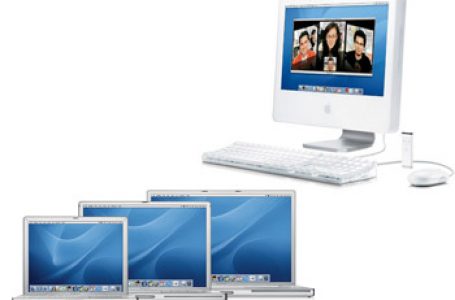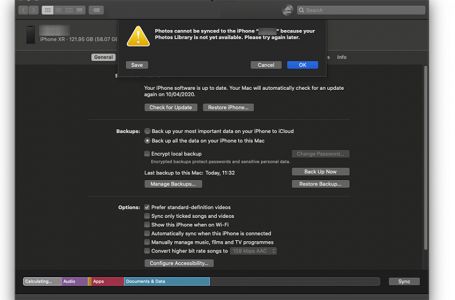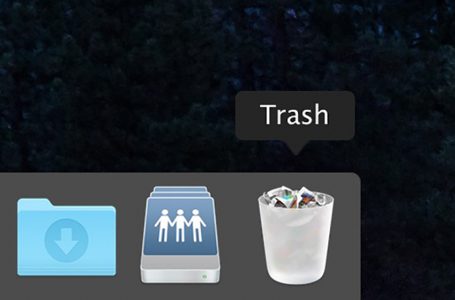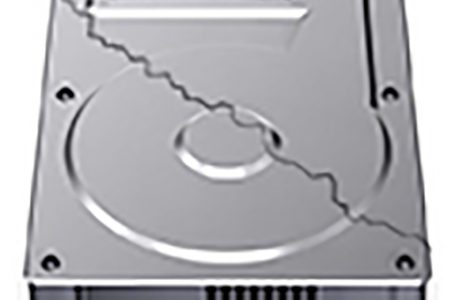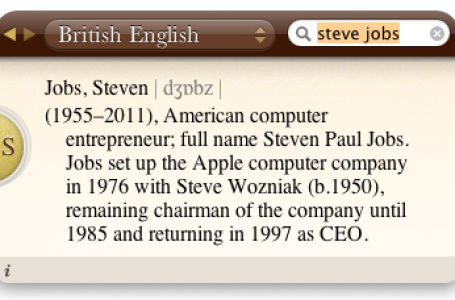Apple 12″ iBook Vs 12″ PowerBook
When it comes down to purchasing an Apple portable, probably the toughest decision will always be the one where an individual has to choose between a 12″ iBook or a 12″ PowerBook. At press time, a 12″ iBook retails at USD$999 whilst a 12″ PowerBook goes for USD$1499; leaving a mere USD$500 margin between the two models.
So, should you pay USD$500 more or save the USD$500 to your next purchase? This article attempts to examine one of the most pondered over conundrums when it comes to purchasing the most portable Apple portable.
One of the first things to consider before making a decision, is “why are you purchasing this Apple portable?”
Some of the typical responses to this are, “to check my email when I’m on the go”, or “I’d like the power to edit my movies and maintain my digital lifestyle in a small package.” And then you have some others who are torn between the two simply on the difference of appearance; one’s hardened plastic whilst the other is industrial Alluminium.
Judgement By System Performance
Before looking at the aesthetics, in true American form, lets consider the performance between the two by taking a peek at what’s lurking underneath the plastic/Alluminium.
In considering the performance of Apple’s range of 12″ portables, 4 main criterion are highlighted:
| CPU Speed | CPU speed determines the speed the computer’s processor handles jobs or requests, changing your CPU speed has the biggest affect on overall system performance |
| Overall system BUS speed | ‘System BUS speed’, is the overall speed by which your entire system sends data from point to point, eg when you instruct your system to burn an audio CD in iTunes. Your data is sent from your system’s hard drive to your processor which in turns processes the request and sends it to your optical drive. The system BUS speed determines how fast this data is sent system wide. Having a fast processor but an overall slower system BUS speed results in a dip in overall system performance |
| Amount of memory installed out of the box | RAM or ‘Random Access Memory’ is used as a temprorary storage space when your system carries out jobs or requests. RAM becomes critical when carrying out multitasking or huge number crunching tasks, eg rendering in iMovie or Final Cut Express/Pro. Having a larger amount of RAM ensures that your system is able to carry out multitasking and huge number crunching tasks in an efficient and stable manner. RAM speed, measured in MHz, is another contributing factor to overall system performance. Generally, the higher the RAM speed, ie MHz, the faster overall performance will be. The speed of the RAM your system is capable of accepting is usually pre-determined by its system architecture; simply installing faster RAM will NOT improve performance if the system is not designed to function with that particular RAM speed |
| Graphics card installed out of the box | Today’s graphics cards come as a Graphics Processing Units (GPU) and takes the burden off the processor by acting as a processor that computes the graphics rendering for the system. That’s why GPU’s come with built-in memory. The more powerful the GPU and the more memory the GPU carries, results in faster overall system performance as it takes on more of the graphics processing, leaving the system’s CPU to handle the rest of the system’s processing requirements |
Diagram 1.0
Over the years, Apple has sought to maintain different target markets with their 12″ portables by distinguishing their overall performance out of the box. That’s to say, the general trend has been that the 12″ PowerBook offers a little more bang for your buck in contrast to the 12″ iBook. This can be observed by comparing the specs of the 2 portables. At press time, the specs comprise of the following components:
| Portable Model | CPU | System BUS Speed | Memory (RAM) | Graphics Card (GPU) |
| 12″ iBook G4 | 1.2GHz PowerPC G4 | 133MHz | 256MB PC2100 (266MHz) DDR SDRAM, expandable to 1.25GB | ATI Mobility Radeon 9200 with 32MB of DDR SDRAM |
| 12″ PowerBook G4 | 1.5GHz PowerPC G4 | 167MHz | 512MB PC2700 (333MHz) DDR SDRAM, expandable up to 1.25GB | NVIDIA GeForce FX Go5200 with 64MB of DDR SDRAM |
Diagram 1.1
The System Performance Verdict: Armed with the explanation in Diagram 1.0, you will immediately notice the vast albeit subtle difference in specs between the two portables. The 12″ PowerBook has a faster CPU, a slightly faster overall system BUS speed, more and faster RAM and a faster GPU with more built-in memory right out of the box. Individual components that work together to contribute to an overall faster performer than the 12″ iBook.
Judgement Based On Video Display Capabilities
An often overlooked distinctive feature that sets the PowerBook range apart from the iBook range, is the PowerBook’s innate ability to carry out Dual Display functions. What this means is that you can hook your PowerBook to an external monitor and extend your total screen real estate to include the external monitor. So that in effect both your PowerBook’s built-in screen and the external monitor form a single canvas.
Traditionally, most portables, including Apple’s iBook range of portables, are only able to carry out video-mirroring functions where the external monitor displays a mirror image of what is on your iBook’s screen.
The PowerBook range also feature DVI video ports that facilitate instant connectivity to Apple’s HD Cinema Displays or other digital displays. The iBook range only feature traditional VGA display ports, limiting the range of external displays its able to connect to.
Video Dispay Capability Verdict: Dual Display is an invaluable function on a 12″ portable, to give you that extra screen real estate when you need it. Where presentations form a regular diet of road warriors having the Dual Display function can sometimes provide face saving moments when you’re setting up or making your presentation. The PowerBook’s DVI port also opens up a world of possibilities in video connectivity in contrast to the iBook’s aged VGA port.
Judgement By Optical Drive Option
The 12″ PowerBook has also traditionally come in 2 default specs to choose from with the main distinction being the availability of an Apple SuperDrive that facilitates the creation of DVDs. In contrast, there is no equal offering on a 12″ iBook, potential buyers have to purchase its bulkier brother, the 14″ iBook to gain access to a SuperDrive.
The SuperDrive becomes a consideration if you intend to do any of the following:
- create DVDs from your video recordings using iMovie, Final Cut Express or Final Cut Pro;
- backup huge amounts of data, DVDs can typically hold 4GB of data in contrast to conventional CDR/W that typically hold between 700MB-800MB per CDR/W
To clear misconceptions, a ComboDrive reads CD/DVDs, reads/writes CDR/Ws whereas a SuperDrive does everything that a ComboDrive does but in addition it also writes to DVD media.
Having said that, at press time, it appears the 14″ iBook’s SuperDrive is inferior to even the 12″ PowerBook’s SuperDrive offering:
| Portable Model | SuperDrive Specs |
| 14″ iBook G4 | SuperDrive (DVD-R/CD-RW); writes DVD-R discs at up to 4x speed, reads DVDs at up to 8x speed, writes CD-R discs at up to 16x speed, writes CD-RW discs at up to 8x speed, reads CDs at up to 24x speed |
| 12″ PowerBook G4 | SuperDrive (DVD±RW/CD-RW): writes DVD-R discs at up to 8x ZCLV, writes DVD-RW at up to 4x ZCLV, writes DVD+R discs at up to 8x ZCLV, writes DVD+RW at up to 4x ZCLV, reads DVD-ROM at up to 8x, reads DVD-R at up to 6x, reads DVD+R at up to 6x, reads DVD-RW at up to 6x, reads DVD+RW at up to 6x, writes CD-R discs at up to 24x speed, writes CD-RW discs at up to 10x speed, reads CDs at up to 24x speed |
Optical Drive Option Verdict: Its best to purchase a system with a SuperDrive if you intend to use the DVD writing capability. iMovie and most other Apple video editing applications are NOT configured to function with external DVD writers and retrofitting your system later is an immensely costly endeavour. However, if you are undecided and are borderline deciding to purchase a system with a SuperDrive just in case you might one day realise the need for its DVD writing ability, please bear this caveat in mind – although the gap is closing, in general ComboDrives have a higher CDR/W write speed compared to SuperDrives. If you burn CDR/Ws more often than DVDs (if at all), a ComboDrive might be a better option as it performs the task faster.
Judgement Based On Audio Connectivity
With the introduction of applications like Apple’s Garage Band, that literally turn your Mac into a home recording studio, its worthwhile to consider the audio connectivity of your Mac before making your investment. The iBook range does NOT have the ability to pipe audio into your system. It only can pipe audio out of your system (Diagram 1.4).
In contrast, the PowerBook range have a Microphone In Jack (Diagram 1.3) that facilitates piping audio into your Mac directly from any external microphone jack input.
To achieve similar functionality iBook users can only do so by purchasing a USB audio hub that converts microphone signals into USB signals, eg Griffin’s USB Audio Hub or Griffin’s iMic.
Audio Connectivity Verdict: The PowerBook range is an out of the box solution for home DJs and garage bands alike. If a full-time audio-in jack is not required an iBook gets the job done just as well with a little more investment.
Judgement Based On Bluetooth Connectivity
At press time, Apple does NOT offer Bluetooth as an out of the box solution for the iBook range. Your 12″ iBook can however, be custom built to include an internal Bluetooth module for USD$50:
Although, you may choose to purchase an external USB Bluetooth adapter in lieu of an internal solution, there have been feedback that external Bluetooth adapters tended to suffer from either high power consumption or erractic Bluetooth connectivity issues. An internal Bluetooth solution is recommended for hassle free Bluetooth connectivity.
Having said that, there’s no indication from Apple whether the custom built internal Bluetooth module is similar to the latest PowerBook internal Bluetooth 2.0+EDR feature.
Bluetooth Connectivity Verdict: Bluetooth connectivity becomes a necessity when you decide to sync your portable devices with your Mac, eg PDAs, PocketPCs, cell phones or even other Macs. Bluetooth is also a viable option for small file wireless transfer. Leaving Bluetooth as a retrofit option is an expensive decision, it costs a fraction of the cost to custom order your 12″ iBook to include an internal Bluetooth module.
Judgement Based On Battery Life
Following technical specs, the 12″ iBook outlasts the 12″ PowerBook by an hour, with a running time of 6hrs and 5hrs respectively. In reality, the PowerBook’s higher performance tends to bring its operating time to about an average 4.5hrs on a full charge. In contrast, the 12″ iBook’s marketed spec is quite accurate and runs for about a little over 5hrs on a full charge. Making it the ultimate war driving and cyber cafe tool.
Battery Life Verdict: Although touted to have only a slight operating time difference to the 12″ iBook, the 12″ PowerBook in reality not only works harder, it also dispenses a lot more heat than the 12″ iBook. Causing its battery life not to last nearly close to its touted operating time. Of all the Apple portables, the 12″ iBook is still the portable with the longest operating time on a full charge, some times averaging 6hrs plus depending on your settings and usage patterns.
Judgement Based On WiFi Effectiveness
Not many know this but the iBook range has the most effective WiFi range of all the Apple portables. It could be the metallic casing of the PowerBook range or simply the difference in architecture but from the Titanium PowerBook series to the recent Alluminium PowerBook series, the white hardened, scratch-resistant plastic shielded iBook receives WiFi signals at almost, if not, double the range to any PowerBook. This has been proven through repeated field tests year after year.
WiFi Effectiveness Verdict: The 12″ iBook wins hands down. The ultimate war driving and cyber cafe tool.
Where Do We Go From Here?
Undoubtedly, armed with the mass of information handed to you in the above article, you’re probably worse off than when you began. More confused and possibly slightly more frustrated. Lets round things up and summarise, maybe that might help you clear your thoughts. To aid in this, here is a comparison chart of the issues discussed earlier:
| Portable Model | System Perfomance | Video Display Capabilities | Optical Drive Option | Audio Connectivity | Bluetooth Connectivity | Battery Life | WiFi Effectiveness | Recommended Use |
| 12″ iBook G4 | Lower overall performance | Mirroring only with VGA port | ComboDrive only | Audio-out Jack only, audio-in requires additional USB audio hub | Bluetooth not built-in as standard, custom order internal Bluetooth module available at USD$50 | Approx. 6hrs real-world usage | Receives WiFi up to double the range of PowerBook | War driving, cyber cafe tool. Great for students to get assignments done and for carrying around campus all day. Will also suit the ‘personal user’ that uses portable mainly to check emails, perform light word processing tasks, store tunes and photos |
| 12″ PowerBook G4 | Higher overall performance | Mirroring and Dual Display modes with DVI port | ComboDrive And SuperDrive configurations available | Audio out/in Jacks as standard | Internal Bluetooth 2.0+EDR as standard | Approx. 4.5hrs – 5hrs real-world usage | Receives WiFi at about half of iBook range | Suited for the professional road warrior, mobile designers or video editors. Great entry level PowerBook for budding creative geniuses on a budget |
Other miscellaneous distinctions that we viewed as non-priority considerations include:
- the 12″ PowerBook G4 sports a total of 3 speakers, including a midrange speaker that is housed beneath the keyboard, providing a better acoustic range playback; the 12″ iBook has only 2 speakers;
- the 12″ PowerBook G4 weighs in at 2.1Kg whilst the 12″ iBook G4 clocks in at 2.7Kg;
- the 12″ PowerBook G4’s overall form factor is slightly smaller and thinner than the 12″ iBook G4;
- the 12″ PowerBook’s keyboard is fastened to its chassis and feels firmer with ergonomic key arrangement whilst the 12″ iBook G4’s keyboard is user-removeable and feels flimsy and flat to the touch;
- although bearing similar screen dimensions, the manufacturer of the screens often differ and there are occassions where the 12″ PowerBook G4 screens have better viewing clarity than the 12″ iBook G4’s and vice-versa depending on the manufacturer at the time;
At the end of the day, our advice is not to succumb to the IT myth that everything goes obsolete therefore, “buy the latest and fastest computer in the market at the current time.” Although there is some truth in the myth but we firmly believe that the better option is to buy what you think you will need and this goes to looking back again at what your purpose for purchasing a 12″ Apple portable is to begin with, Match your desired use with the information we have provided and you should be able to use your Mac for a long time to come. Unlike traditional PCs that become obsolete very fast, Mac’s have a long running reputation to be able to perform the tasks they were originally purchased for, for its entire lifetime.







